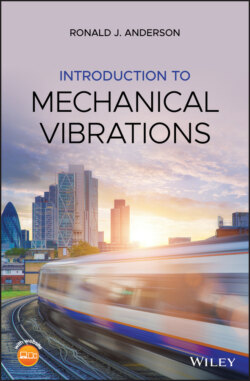Читать книгу Introduction to Mechanical Vibrations - Ronald J. Anderson - Страница 12
1 The Transition from Dynamics to Vibrations
ОглавлениеIntroductory undergraduate courses on dynamics typically consider large scale motions of systems of particles and/or rigid bodies and instantaneous solutions to their nonlinear, governing equations. You may recall working on dynamics problems where a system of bodies starts from rest at a prescribed position and your task was to determine, for example, the angular acceleration of a body or the forces acting on some part of the system. Solutions like this, while having some utility, provide only part of the understanding of the system that is required for a successful design. In most cases, the derived governing equations are complete enough but the “snapshot” solutions don't help much with the design process.
There are, in fact, many things that can be done with the equations governing the dynamic motion of the system. Briefly, they can be used to
1 Find where the bodies in the system would be if the system were at rest. These are the Equilibrium States.
2 Determine whether the equilibrium states are stable or unstable.
3 Determine how the system behaves for small motions away from a stable equilibrium state.
4 Determine the response of the system in the time domain through the use of numerical simulations. This is the most complex type of analysis and, perhaps surprisingly, gives the least information to the designer until the design has reached the fine tuning phase. The simulations are the analog of “cut and try” experiments where an unsuccessful result gives little information on what to change in order to improve the design.
While going through the material presented in this book, you will be concentrating on very small motions of systems about stable equilibrium states. In doing so, you will see connections to topics you may have covered in courses on statics, on dynamics, and on control systems. You will become very familiar with the linearized, differential, equations of motion for dynamic systems moving around stable equilibrium states and methods for deriving and solving them. This is the essence of Vibrations.
To get started and as a review of sorts we begin with the dynamic analysis to a relatively simple system – a bead sliding on a rotating semicircular wire.
